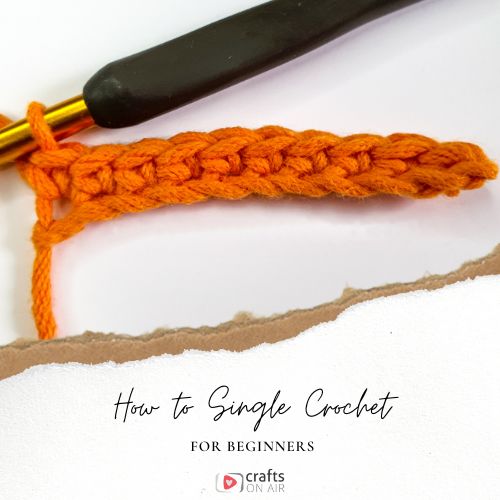
Have you ever wondered how to crochet the single crochet (sc) stitch? Single crochet is a simple, versatile stitch that forms the foundation for a variety of other crochet stitches. It is one of the basic stitches that you will need to learn to be able to start creating crochet patterns.
Single crochet is the perfect stitch to practice if you are learning to crochet. Once you have mastered the single crochet, you can move on to the other basic foundational crochet stitches like the half double, double, and the treble crochet stitch.
In this post you will find a single crochet tutorial with simple instructions for beginners, as well as free patterns that use the single crochet stitch to practice on. You will learn everything you need to know to master the single crochet here.
Introduction to the Single Crochet Stitch
If you are new to the craft, you will want to start by mastering the basics. The single crochet stitch is one of the first stitches you will want to learn, and this crochet stitch tutorial will help you with everything you need to know.
Before moving on to making single crochet, you must first master the slip knot and chain stitch. If you already know how to make a slip knot and chain stitch, you are ready to learn how to do a single crochet.
What is a Single Crochet Stitch?
Single crochet starts with a chain and the stitch is worked with yarn overs and by pulling through loops, which creates a compact crochet fabric.
Single Crochet Abbreviation
In most patterns, you will find single crochet is abbreviated as sc in US terms.
What is a Single Crochet Stitch in the UK
In the UK, single crochet is known as double crochet and is abbreviated as dc.
Chart Symbol for Single Crochet
In patterns using chart symbols, the single crochet is shown as a small plus sign (+) or an X.
What are the Main Basic Crochet Stitches
Once you have mastered the single crochet, you can practice some of the other basic crochet stitches like the double crochet (dc), half double crochet (hdc) and treble crochet (tr) stitches.
You will find that all of these stitches are based on the same techniques you learn with single crochet, which is why it’s such a great place to start when you are learning to crochet.
Anatomy of a Single Crochet Stitch
One of the things you learn when you start crocheting is that there are different parts to a crochet stitch. While the basic stitches are constructed differently and have varying heights, the top part of these stitches all looks the same.
The top of the stitch is made up of two loops – the front loop (the one closest to you as you stitch) and the back loop (the one further away from you). If you look closely at the top of your stitch, you can see a sort of V-shape.
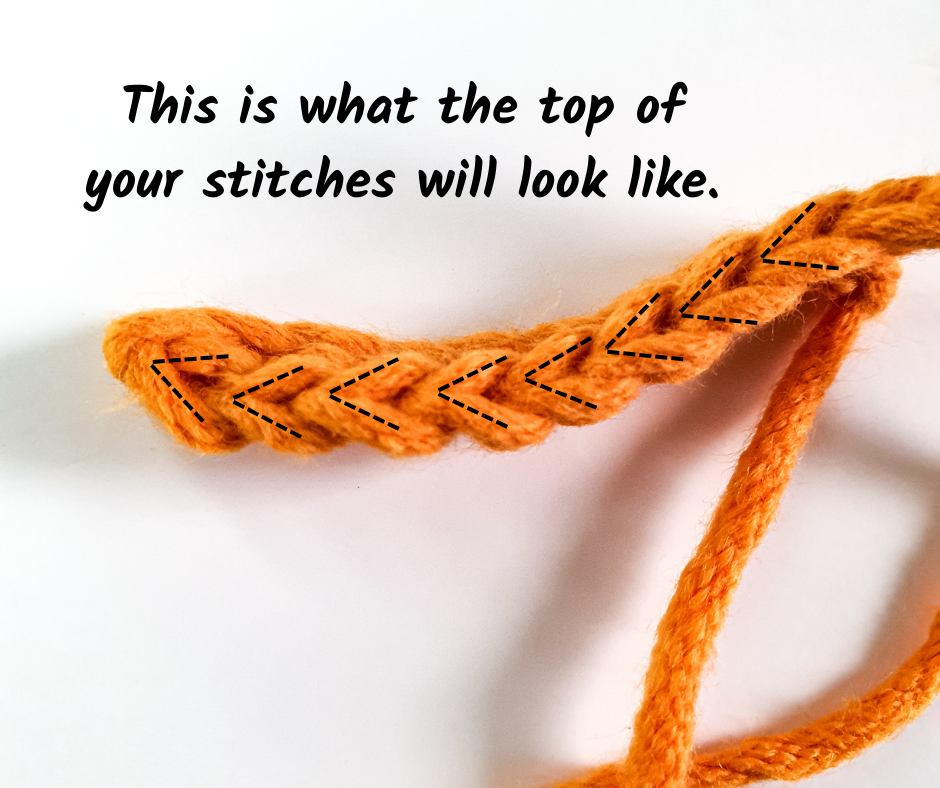
When we start crocheting a new row, we usually insert the hook under both loops of the stitch from the previous row.
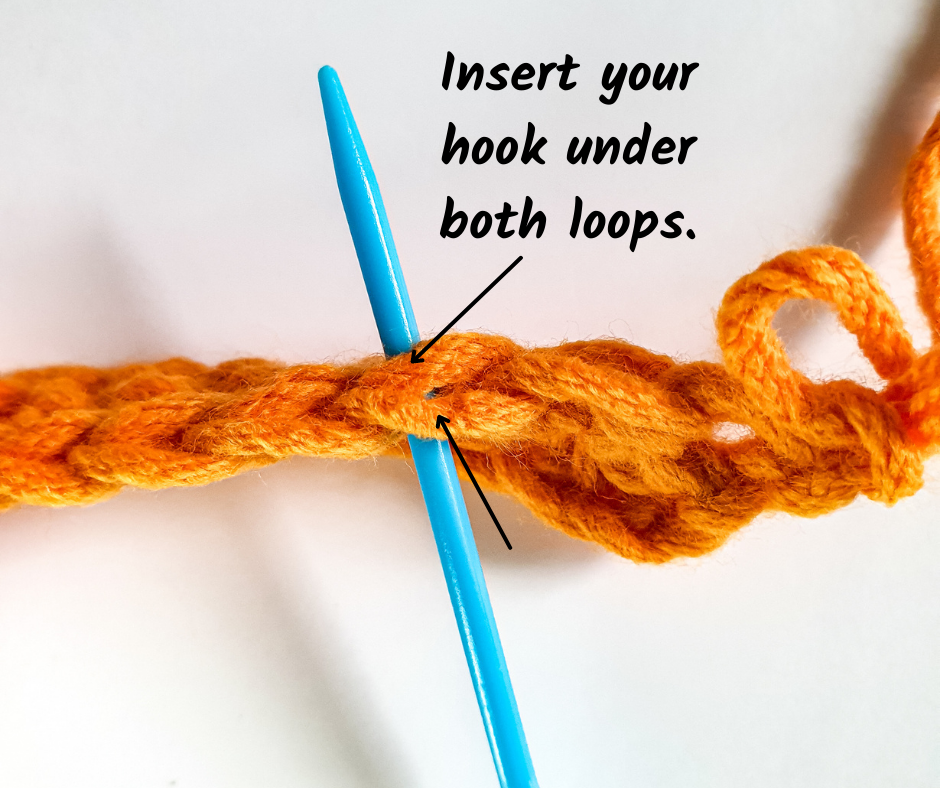
Stitch Height
Each basic stitch is unique because of the post of the stitch. The post of the stitch is its body and determines its height. A single crochet stitch is the smallest of all the basic stitches.
The post of single crochet commonly looks like a small v.
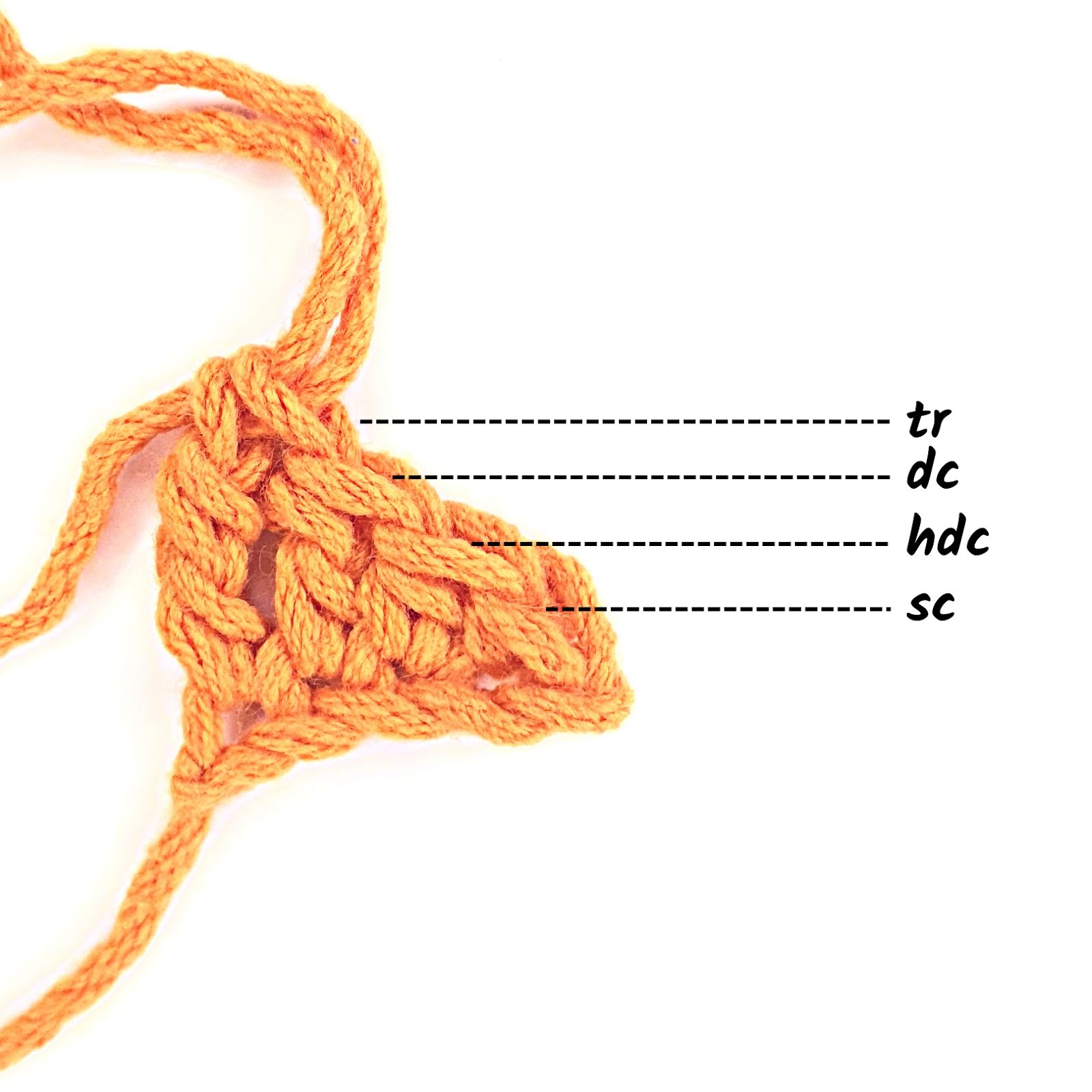
Single Crochet Turning Chain
When crocheting a new row of crochet, you usually make a turning chain that takes the place of the first stitch in the new row. For single crochet, however, the turning chain does not usually take the place of the first stitch.
After the first row of single crochet, turn the work and make 1 chain – this is your turning chain – then crochet your first single crochet in the last stitch from the previous row.
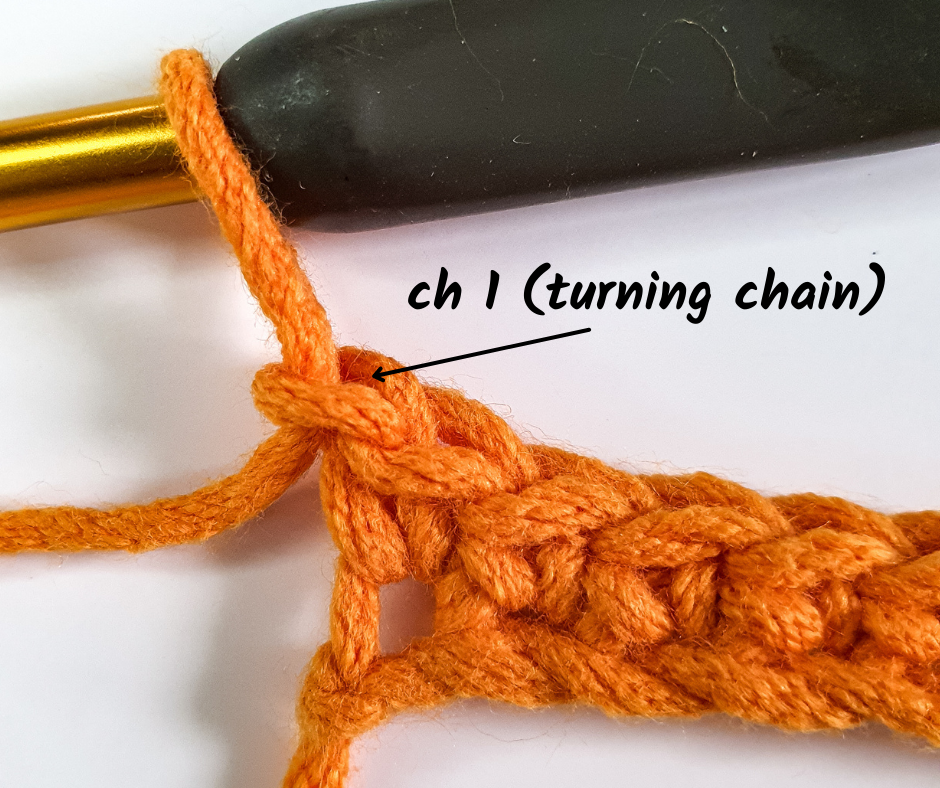
How to Determine the Right Side of a Single Crochet Fabric
The right or front side of single crochet stitches shows an upright v, while the wrong side or back looks like lines underneath the v stitches.

Tools You Need for Single Crochet
When learning how to crochet, it is recommended to use a light colored medium weight yarn and a crochet hook in the corresponding size (you may check the yarn label for the suggested hook size.)
Yarn
A smooth, worsted weight (4/Medium) yarn such as Lion Brand 27/7 Cotton is a great choice for practicing crochet stitches.
Hook
5 mm crochet hook or any hook size recommended for the yarn you choose.
Notions and Tools
- Stitch markers to mark the last stitch in the row (optional)
- Scissors
- Tapestry needle (for weaving in ends)
Learning to crochet can be a wonderful experience once you have mastered the fundamentals. When we think of crochet basics, we think of the single crochet stitch. Even if you only know how to do a single crochet, you will still be able to create a lot of different patterns and projects like blankets, sweaters, and even amigurumi!
Step-by-Step Single Crochet for Beginners
When you have your materials ready, you can start learning how to do the single crochet stitch.
Single Crochet Starting Chain
To begin, make a slip knot on your hook.
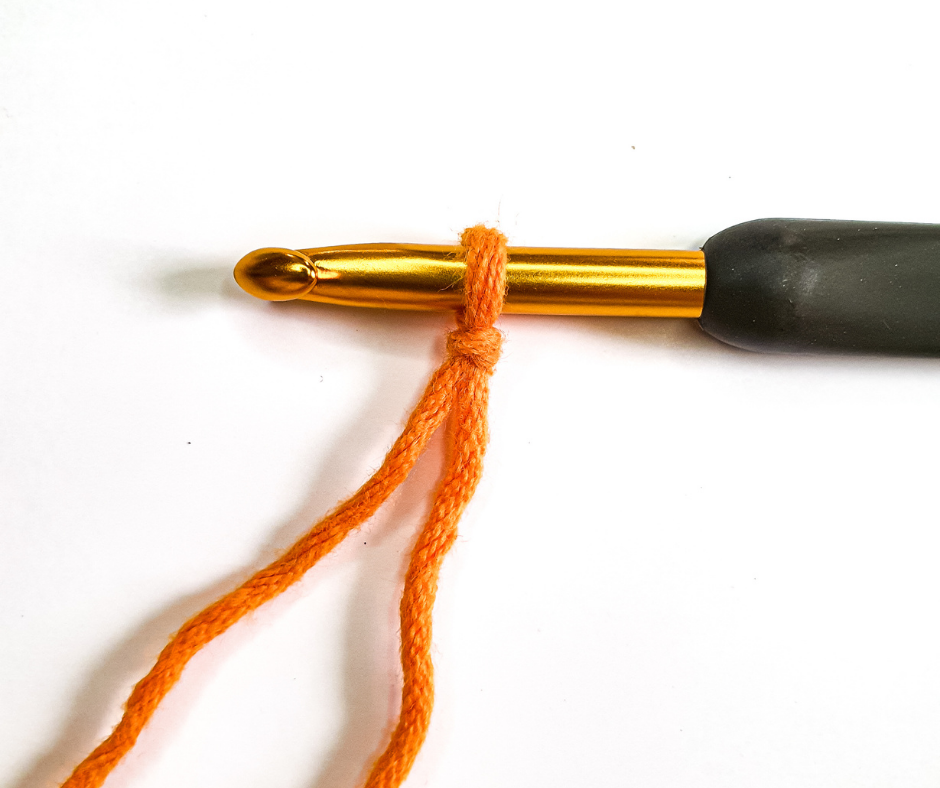
Make the number of chains needed for your project + 1 for your turning chain. To make a chain, yarn over and pull through the loop.
For this example, chain 10 + 1 (turning chain). You should have a total of 11 chains.
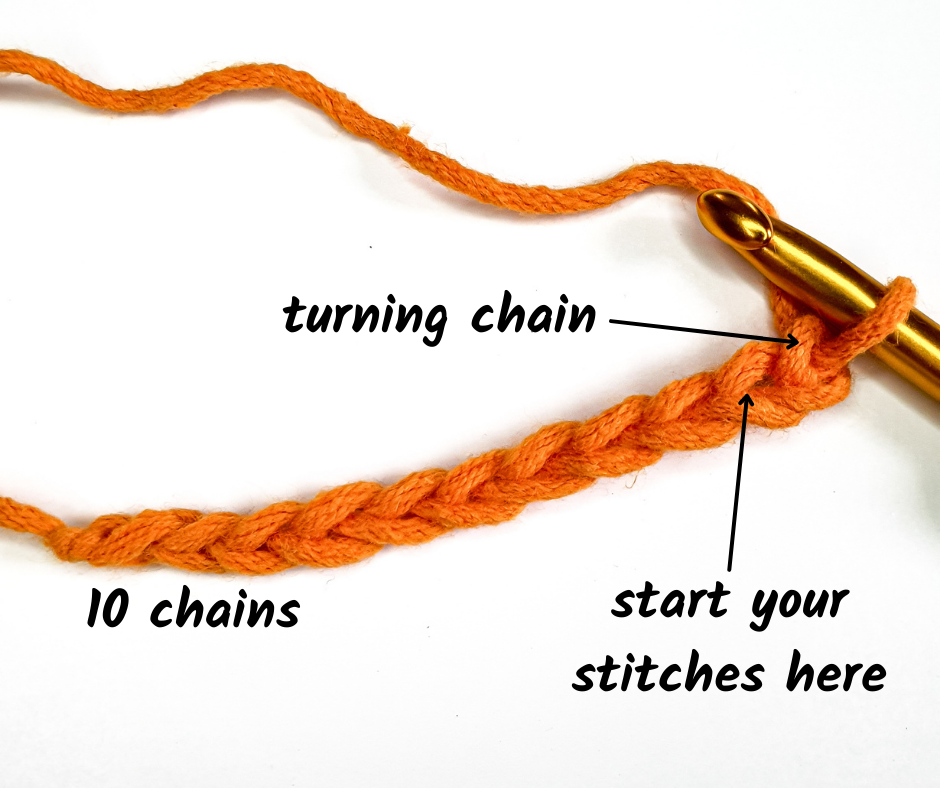
Single Crochet Row 1
To start the first row of single crochet, find the second chain from your hook. This is where you will start your first single crochet. The following photo tutorial will show you how to start your single crochet row 1.
Insert the hook into the back loop (the loop farther away from you).
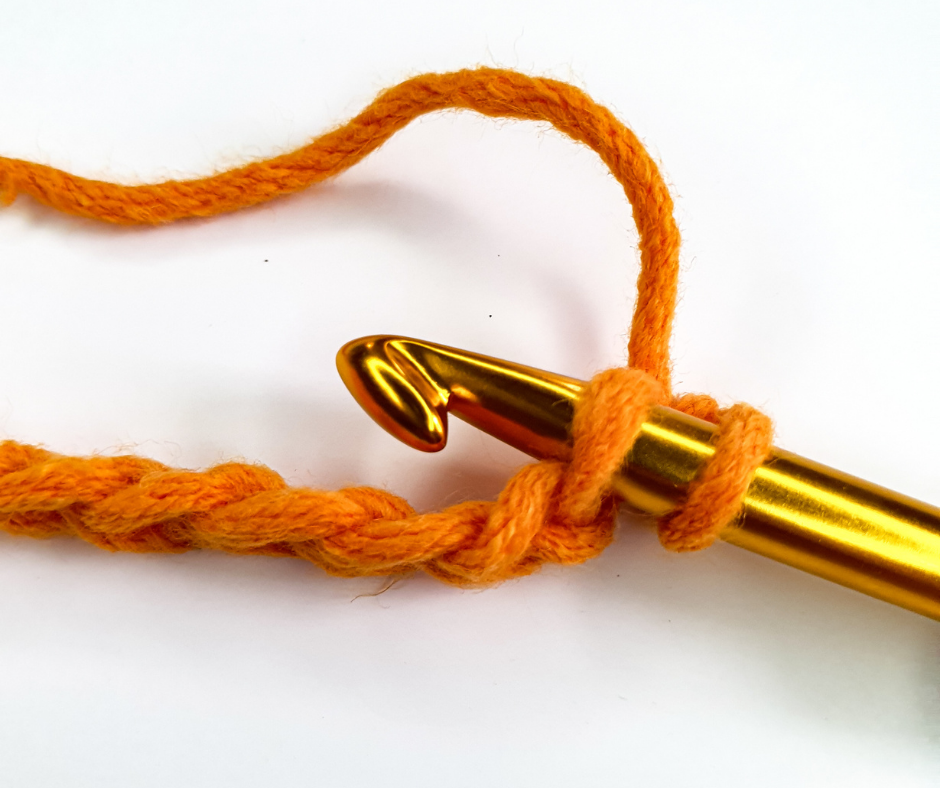
Yarn over (wrap your yarn around your hook), and pull it through. You should now have two loops on your hook.
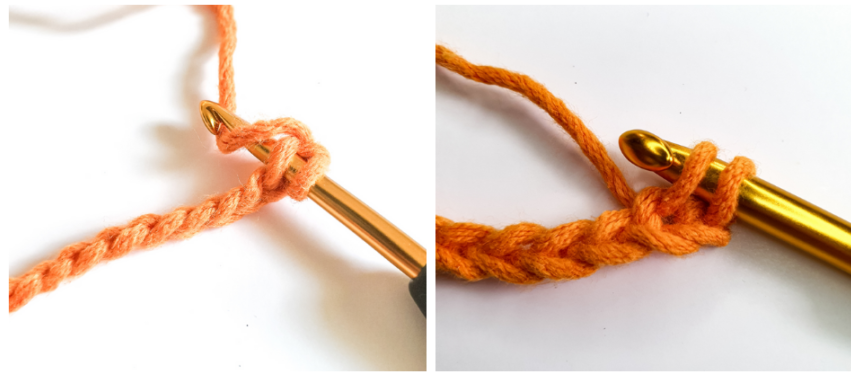
Yarn over and pull through both loops. You have finished one single crochet stitch!
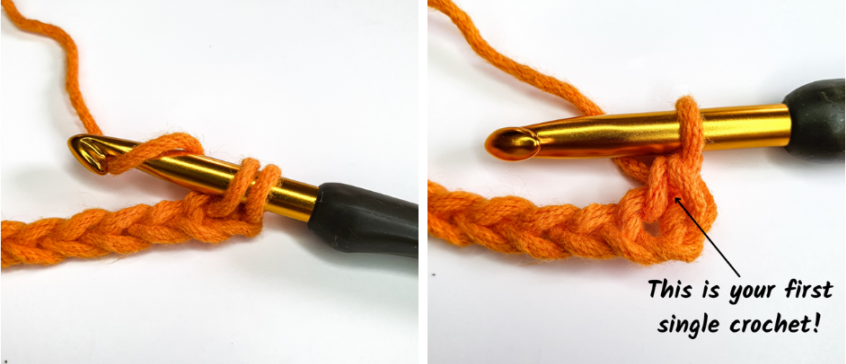
Repeat the same process in each chain until you reach the end of the row.
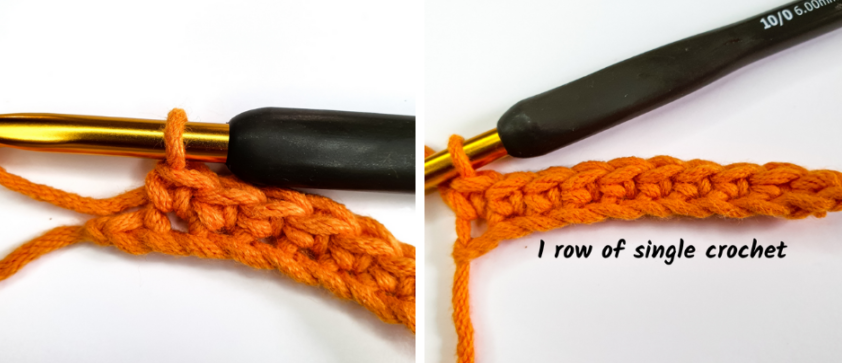
Single Crochet Row 2
To begin the next row of single crochet, turn your work over and ch 1. This serves as your turning chain.
You will work your first stitch in the stitch closest to your turning chain.
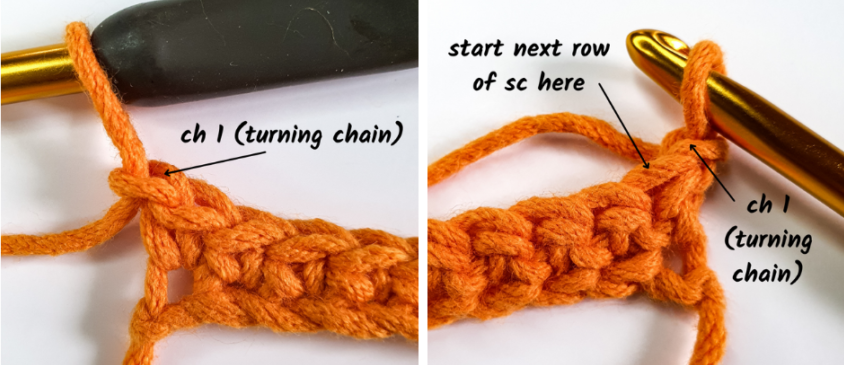
Insert your hook under both loops of the first stitch. Yarn over, and pull through. Yarn over and pull through both loops.
Continue until you reach the end of the row. Your last stitch will go on top of the turning chain from the previous row.

How to Crochet Straight Edges with the Single Crochet Stitch
To make sure your edges are straight when you work single crochet, make sure are starting and ending the row by working into the correct stitches. Count your stitches to make sure you are not accidentally adding or subtracting stitches in each row.
You may use stitch markers to mark your first and last stitches to make it easier to know where your stitches go and to count them at the end of the row.
Remember, the turning chain is not counted as a stitch.
Single Crochet Foundation Chain (fsc) – An Alternative to Starting with the Regular Chain Stitch
You may come across some projects that will require you to make a long chain. For example, this Outdoor Picnic Blanket from Maria’s Blue Crayon will have you chain 136 to begin the project.
To avoid losing count of your chains, missing stitches, and having to go back and forth just to create that foundation row – you can start with a single crochet foundation chain (fsc). The fsc lets you work your foundation chain AND the first row at the same time. Using an fsc also allows you to have a foundation row that is the same tension as your other rows (not too tight and not too loose) to make a more even edge.
When making the fsc, you will be working vertically instead of horizontally and your first row will be on the right side of your work (the chains will be on the left side). It’s pretty easy to learn, and you can use it anytime for any pattern!
To make a single crochet foundation chain:
Ch 2. Insert your hook under both loops of the first stitch. Yarn over and pull through.

Yarn over and pull through the first loop only. You have now created the next chain for your row. Yarn over and pull through both loops to create your single crochet.
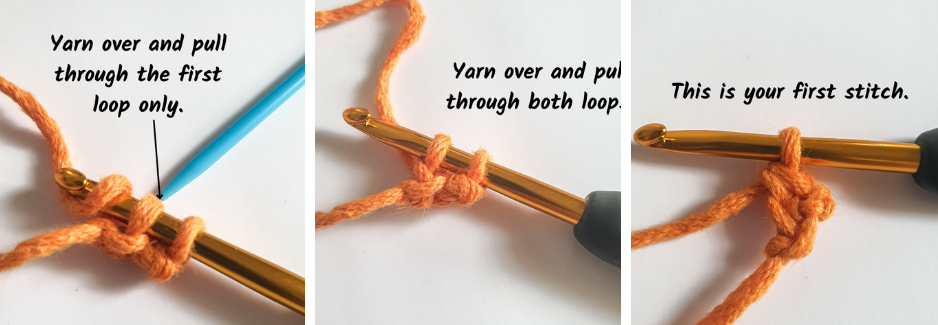
Insert the hook under both loops of the chain you created. Repeat the same steps as above to create your next single crochet, until you get the number of stitches you need. Turn your work and chain 1 to start the next row.
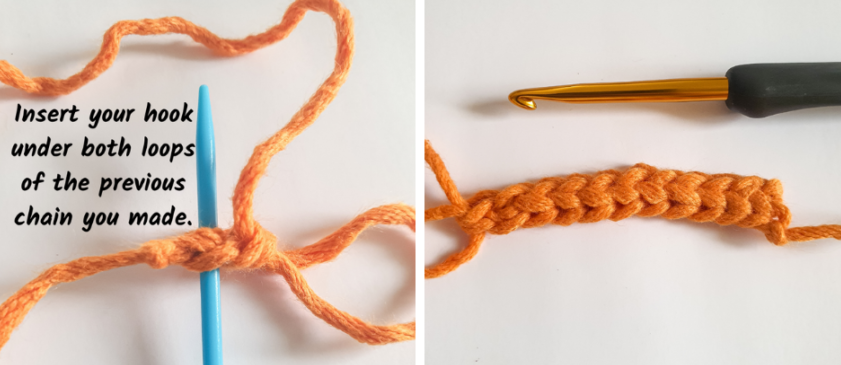
How to Fasten Off in Single Crochet
To fasten off when you are done with your crochet project, cut the working yarn, leaving a 4-5 inch tail. Pull your hook straight up to bring the yarn tail through the last loop. Use your tapestry needle to weave in the ends.
Single Crochet Increases and Decreases
To add shape and dimension to your crochet piece, you can make single crochet increases and decreases.
Why Do I Need to Increase and Decrease?
You make single crochet increases if you want to add more stitches to your current row or round, and single crochet decreases when you want to subtract stitches to your current row or round.
This is especially useful when you are making amigurumi because there is a lot of shaping involved to make those fun toys. But hats, garments, and other projects need increases and decreases, too
How to Do a Single Crochet Increase (sc inc)
The single crochet increase (sc inc) is quite simple. To make an sc inc, you make 2 sc in the same stitch.
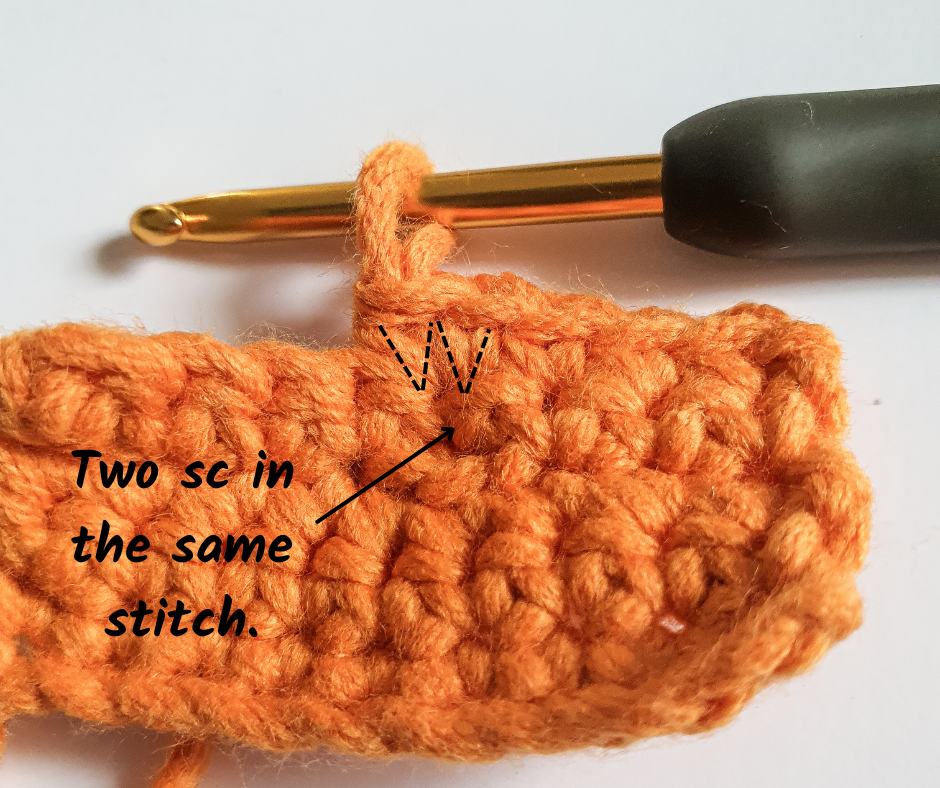
This will add one stitch to your total stitch count for this row.
How to Do a Single Crochet Decrease – Single Crochet Two Together (sc2tog)
A single crochet decrease is also known as sc2tog (single crochet 2 together) or sc dec. When you decrease you will work on two consecutive stitches together to turn them into one stitch.
To make an sc2tog, insert your hook under the first stitch and pull up a loop. Do the same with the next stitch. You will have 3 loops on your hook.
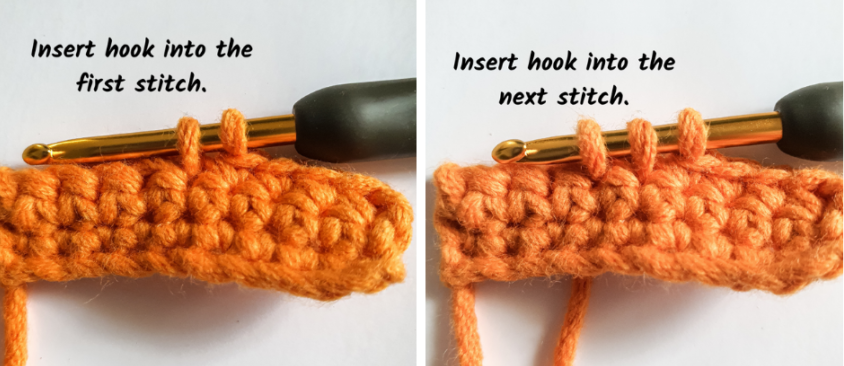
Yarn over and pull through all three loops. You have completed an sc2tog or single crochet decrease.
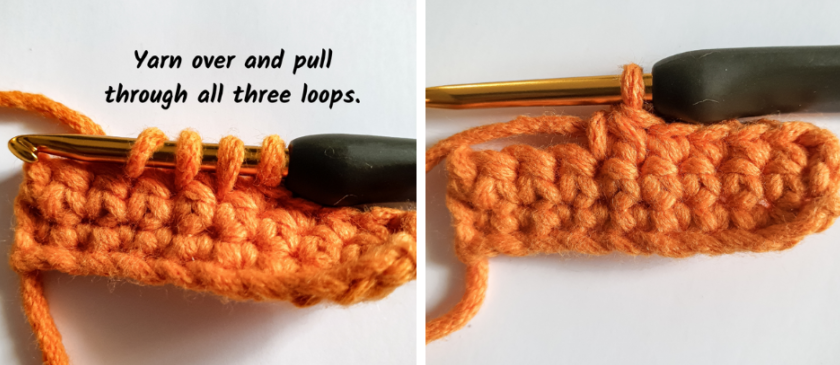
Invisible Decrease (inv dec)
To create a seamless decrease, especially when working in the round, you can use this variation of a single crochet decrease. It is commonly used in amigurumi patterns to create an almost invisible decrease.
To make an inv dec, insert your hook into the front loop of each of the next two stitches.
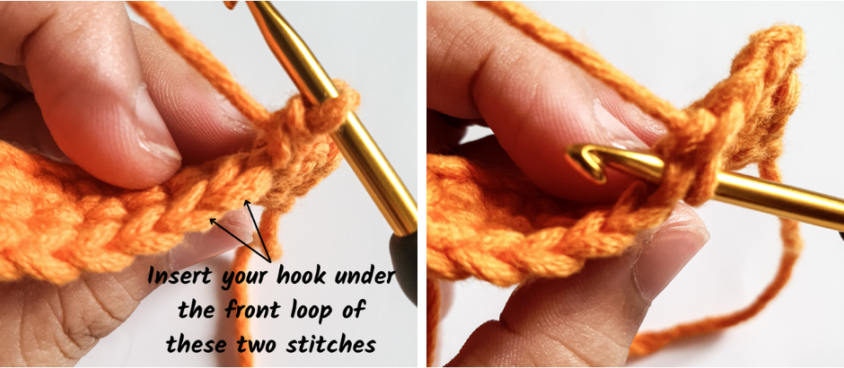
Yarn over and pull through the first two loops. Yarn over and pull through the remaining two loops.
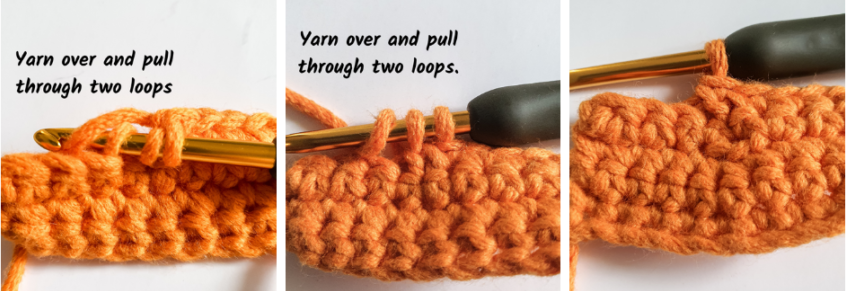
Single Crochet Stitch in the Round
Single crochet can be worked in rows or in rounds. There are two ways to work in the round – joined rounds and continuous rounds.
Joined Round
When working a single crochet in joined rounds, you will connect the first and last stitch of the round with a slip stitch (sl st). To start the next round, you will ch 1 (does not count as a stitch) and make a single crochet in the same stitch as your sl st join.
Use a stitch marker to mark your first stitch to avoid accidentally adding or subtracting a stitch. Remember that the sl st join and ch-1 do not count as a stitch.
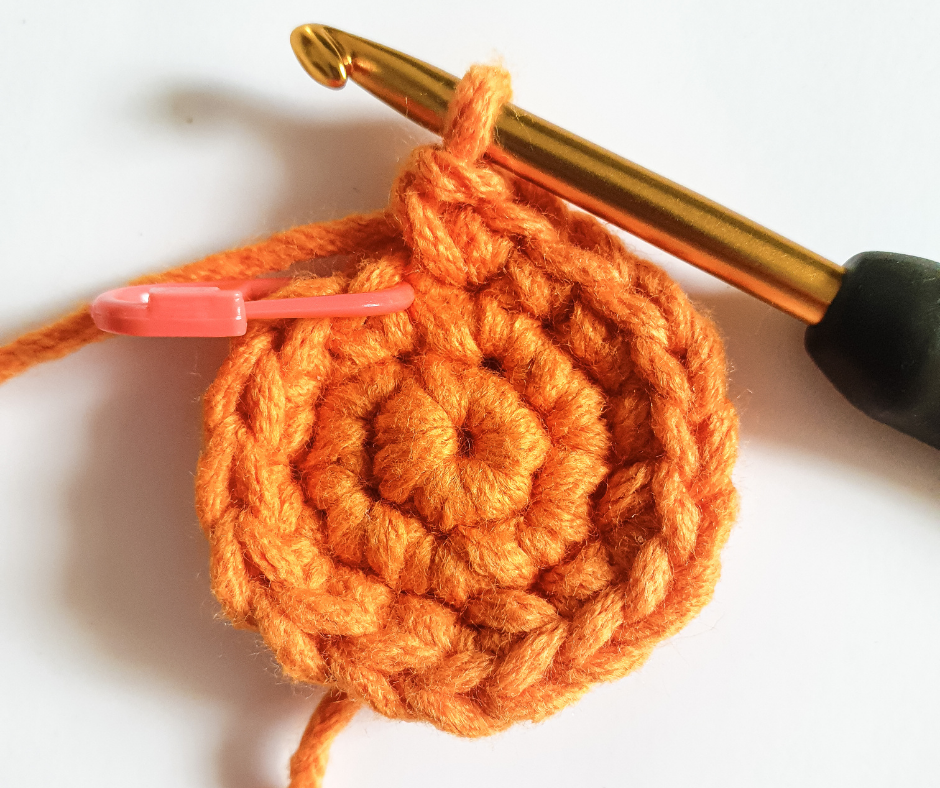
Continuous Round
Continuous rounds or spiral rounds are just as simple as joined rounds. The main difference is that instead of making a slip stitch to join the first and last stitch, you will simply make the first stitch of your next round on top of the first stitch from the previous round.
Use your stitch marker to mark the first stitch of each round since there will not be a visible seam at the end of each round.

Variations on the Single Crochet Stitch
While single crochet is one of the easiest, most basic stitches in crochet, it is also one of the most versatile stitches. You can create a variety of stitch patterns with different looks and textures using this very basic stitch.
Here are some single crochet variations you may want to try:
Single Crochet Ribbing Stitch
Single crochet ribbing is commonly used as edging in garments such as sweaters, cardigans, and beanies. This technique gives the fabric a knitted look and texture, as well as a stretchy fabric. To make single crochet ribbing, you will need to know how to single crochet and make slip stitches.
Try it in the Everyday Ribbed Crochet Hat from Mama in a Stitch.
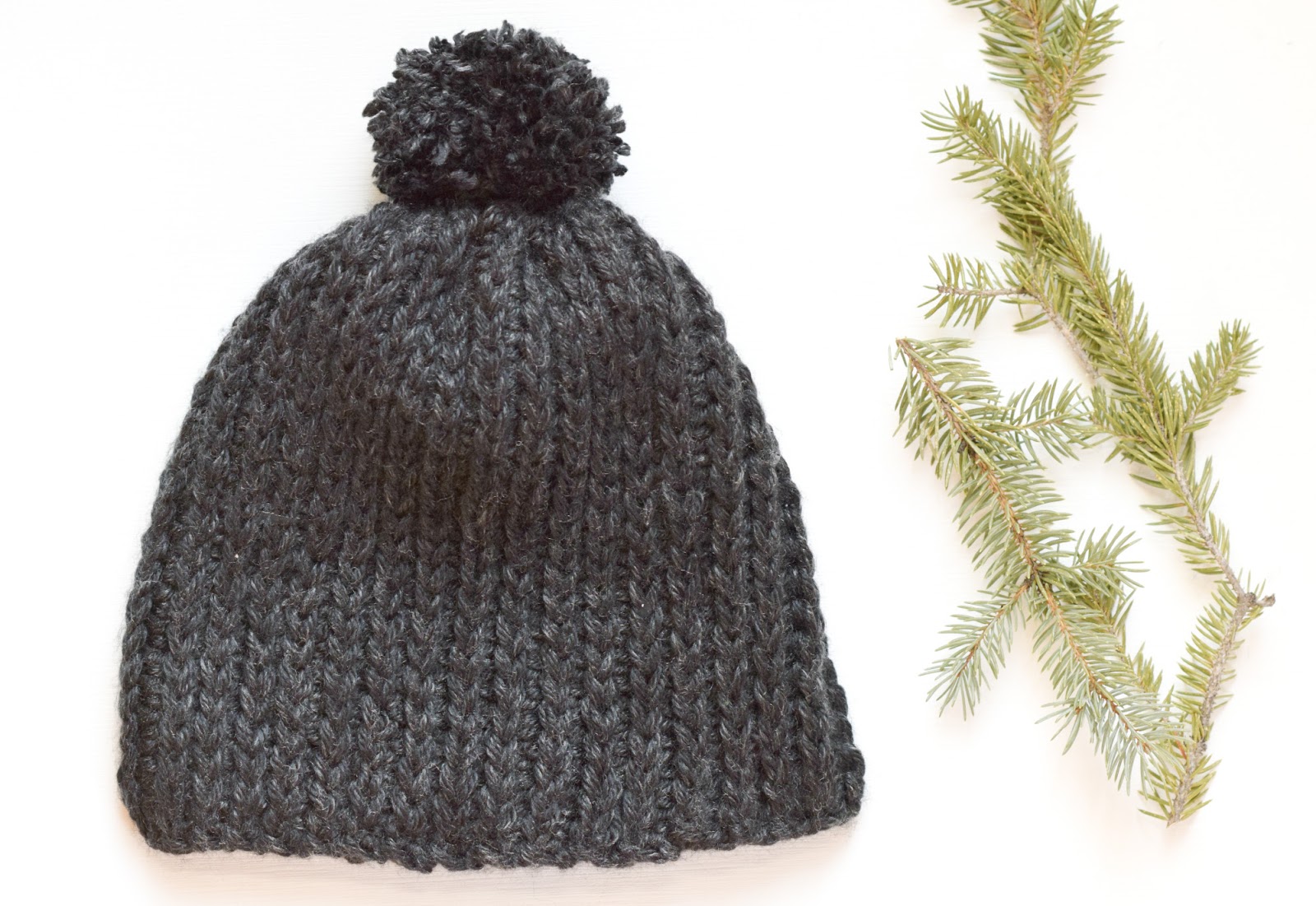
Single Crochet in the Back Loop Only (sc BLO)
Single crochet in the back loop only (sc blo) is another easy variation of the single crochet. Instead of inserting your hook through both loops as is commonly done, you only use the back loop (the loop further away from you as you stitch) to create your stitch. This creates a ridged texture that is commonly used in ribbing, but also works great with afghans and blankets!
Easy Crochet’s Chevron Crochet Blanket is a fun way to practice back loop single crochet and single crochet increases and decreases.
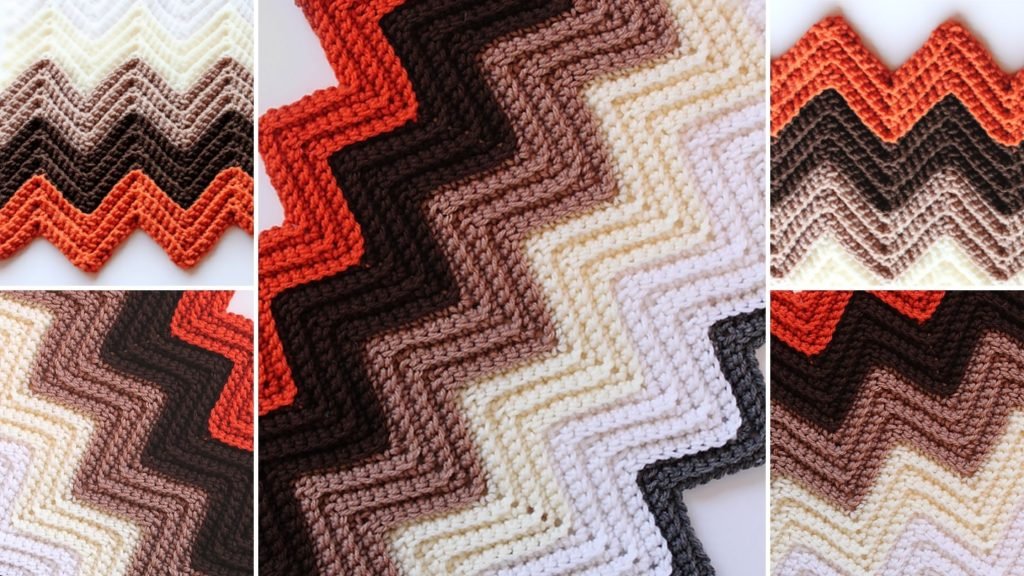
Waistcoat Stitch
The waistcoat stitch looks a lot like the stockinette stitch in knitting. It is a variation of the single crochet stitch that creates a dense and firm fabric – great for making crochet bags and storage baskets, like this great one from All About Ami.
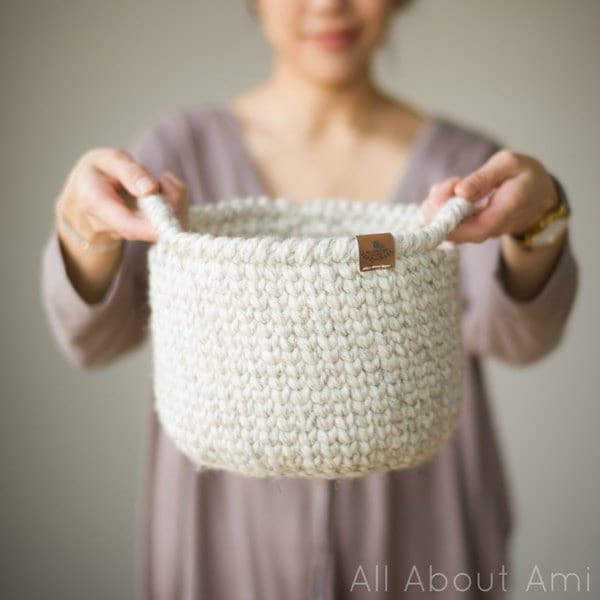
Moss Stitch
Also known as the linen stitch, seed stitch, sand stitch, and granite stitch – the moss stitch creates a lovely textured piece for your crochet projects. It uses basic crochet stitches – the single crochet and a chain – in rows where the pattern alternates. This stitch creates a fabric that is not too holey and has a lovely drape, which is perfect for baby blankets. Try the Crochet Modern Moss Stitch Baby Blanket from Daisy Farm Crafts.
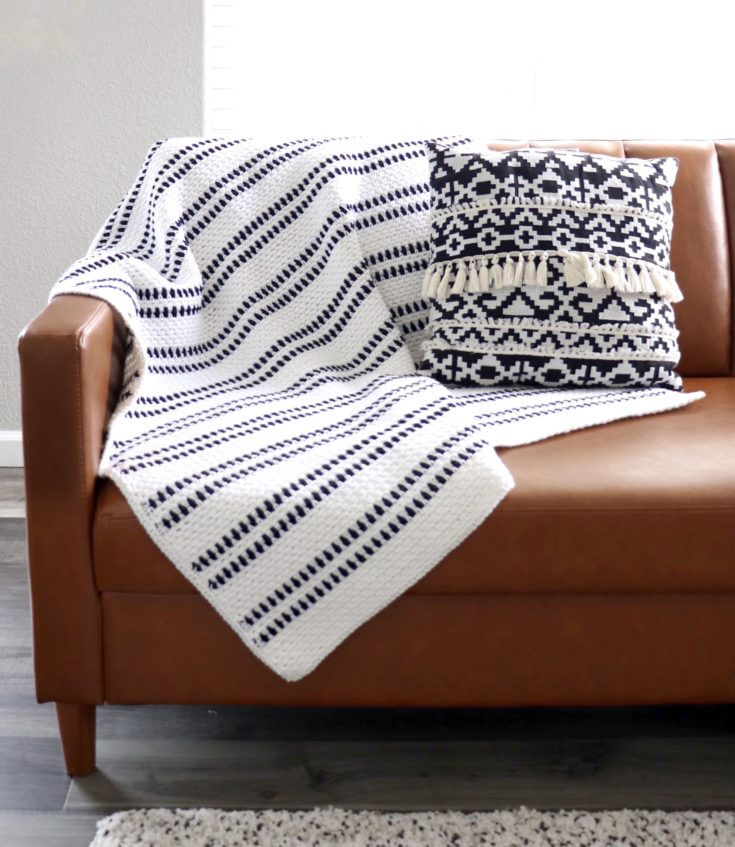
Extended Single Crochet Stitch
Basically a single crochet with an added chain, the extended single crochet adds height to your stitch – it is taller than an HD – but creates a fabric that is solid and less holey (but less dense than a regular single crochet fabric). You can use this stitch to create warm scarves and cowls. The Everlasting Infinity Scarf from Through the Loop Yarn Craft is a great project to practice it.
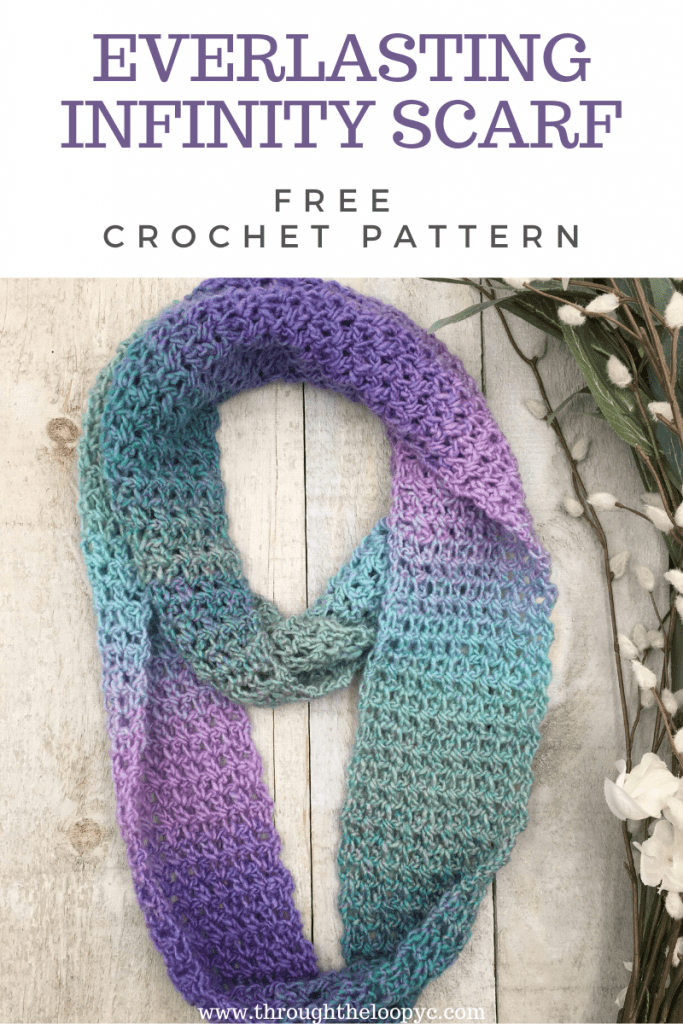
Thermal Stitch
If you want to create a thick, sturdy, and warm fabric – the thermal stitch is the stitch for your project! Because of the way it is constructed, it creates a fabric that is double the thickness of a regular single crochet fabric. The super thick, durable fabric can be used for many projects such as this thermal stitch dishcloth from The Crochet Crowd.
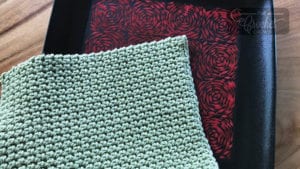
Spider Stitch
Even if you only know how to single crochet and make chains, you can already create lovely stitch patterns such as the Spider Stitch. This stitch has a pretty and tight texture that creates a dense and sturdy fabric with that star stitch look. The Spider Stitch is the single crochet version of a V-Stitch and is great for making cowls and shawls pattern.
This spider stitch-trimmed cowl from Salty Pearl Crochet gives you a little taste of the technique.
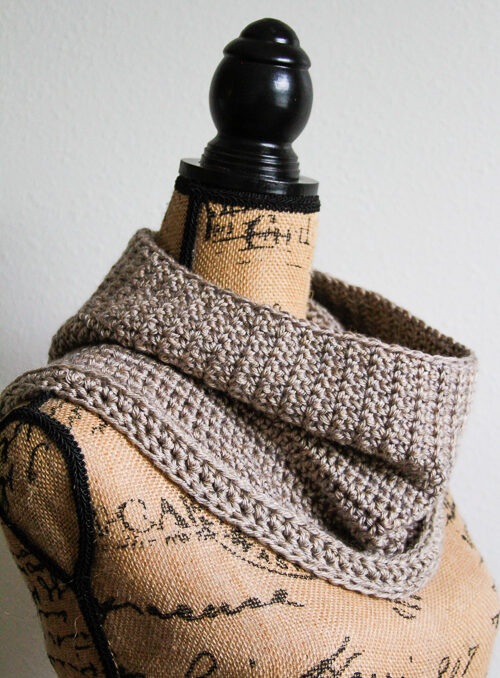
Common Single Crochet Mistakes
It is not uncommon to run into some problems when you are learning to crochet. Here are some common mistakes beginners make and tips on how to avoid/fix them.
Having More or Fewer Stitches in the Row than Needed
If you notice that your rows have more (or fewer) stitches in the row you are working on than you had in the previous row, you may be accidentally adding or removing some stitches. It may also be because you are starting or ending your stitches in the wrong place.
Remember, when doing a single crochet row, the ch 1 at the start of the row does not count as a stitch. You make your first stitch in the last stitch from the previous row, and your last stitch goes on top of the first stitch of the previous row (not the ch 1). Count your stitches or use a stitch marker to mark your first stitch to make sure you get the same number of stitches in each row.
Single Crochet Too Tight or Too Loose
If you are crocheting too tight or too loose, you may want to check your tension. If your tension is too tight, your stitches will be more compact. You may opt to use a bigger hook with your yarn if your stitches are coming out very tight and it’s hard to pull through your yarn.
Likewise, if your stitched fabric is very floppy and holey (which single crochet is not supposed to be) you might try a smaller hook to see if you can make your tension a little better.
My Fabric is Curling
If your fabric is curling, you may be adding stitches to your rows or you are crocheting too tight. Loosen your tension a little – or try a bigger hook – and count your stitches to make sure you have the correct stitch count for each row.
Crochet Patterns I Can Make with the Single Crochet Stitch
There are an infinite number of ways to use the single crochet stitch once you've mastered it. It can be worked in rows, rounds, or spirals, as an edging, in different parts of the stitch for different effects, and in countless combinations with other stitches. Learn how to increase single crochet and do a single crochet decrease, and you can even start making amigurumi!
Single Crochet Blanket Patterns
Single crochet rows create a warm and dense fabric that is perfect for making blankets for any season.
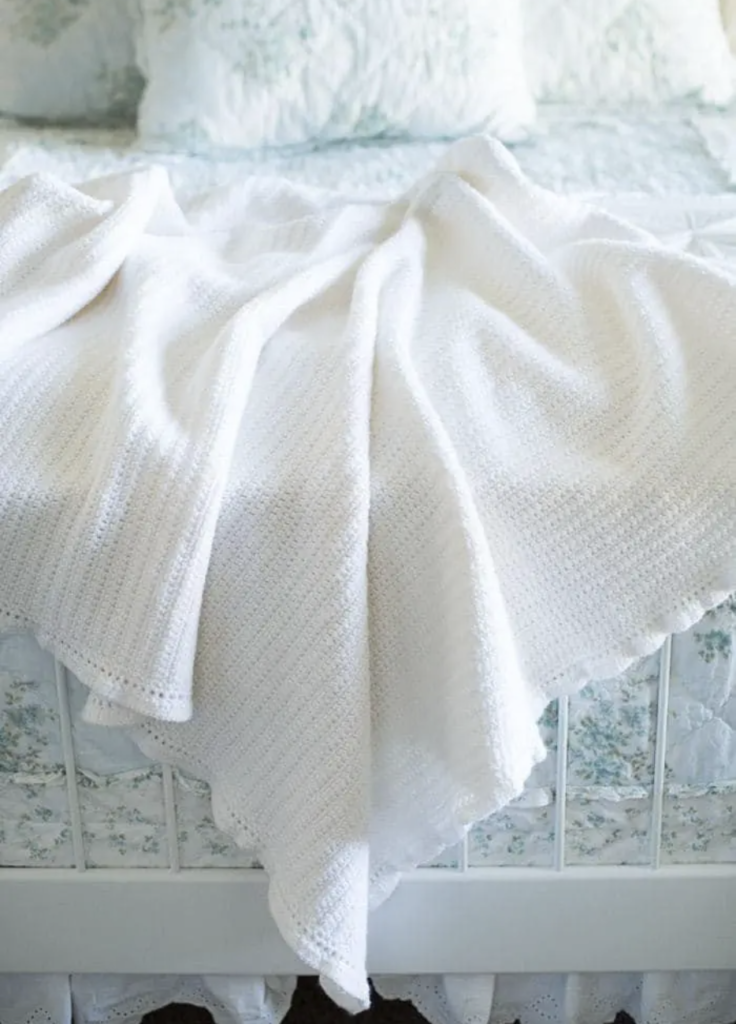
Easiest Crochet Afghan Ever
Designer: Kristine in Between
Yarn weight: (4) Worsted
Suggested yarn: Lion Brand Pound of Love Yarn
This beginner-friendly afghan is made with single crochet rows and a double crochet ruffle edging. It doesn’t require much counting and is worked in a single color, which makes it the perfect project that you can put down and come back to at any time. This blanket uses about 3 ½ pounds of yarn to make a soft and warm blanket.
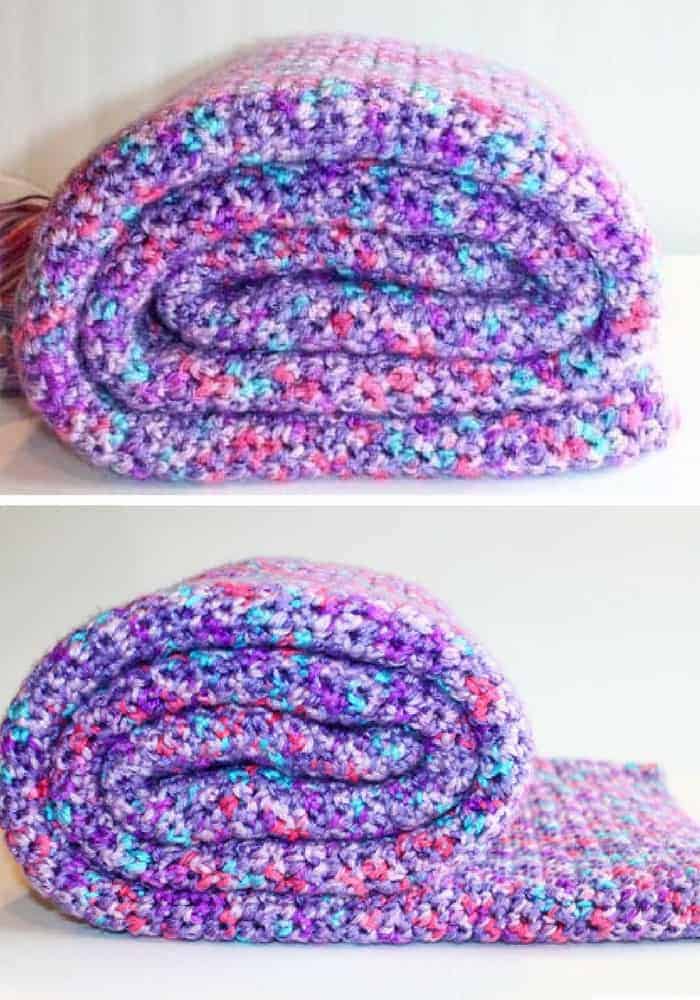
Elise’s Single Crochet Blanket Pattern
Designer: Easy Crochet
Yarn weight: (4) Worsted
Suggested yarn: Lion Brand Bundle of Love
A quick and easy DIY project that is great even for those who are just learning to crochet. Use a colorful yarn to create a soft and gorgeous baby blanket that you can whip up quickly.
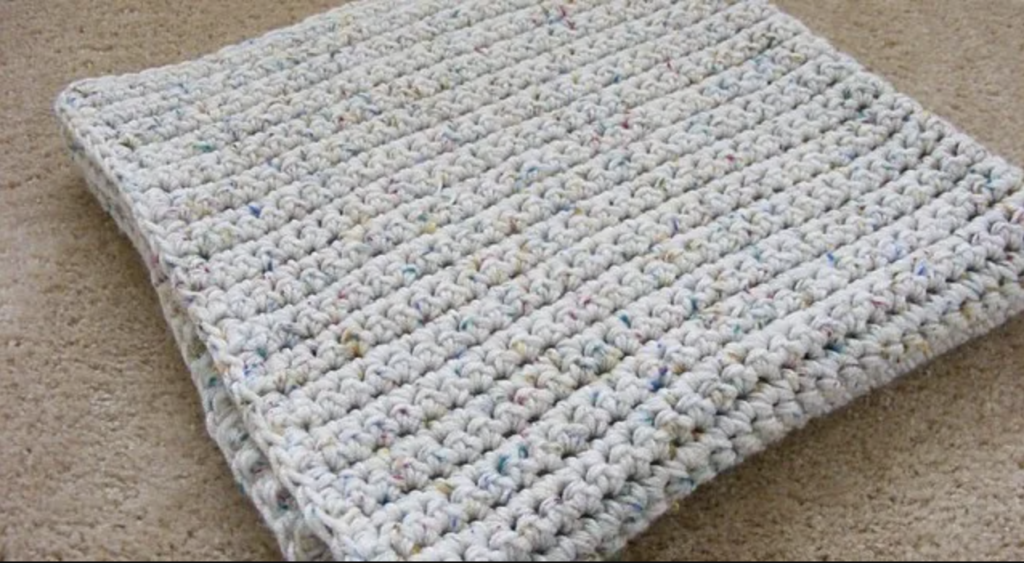
The Simplest Blanket Ever Crochet Pattern
Designer: GretchKal’s Yarny Adventures
Yarn weight: (5) Bulky
Suggested yarn: Lion Brand Homespun
A simple single crochet square blanket that every crocheter will enjoy making. Make it as big or small as you want – all you need is a tape measure to check for size!
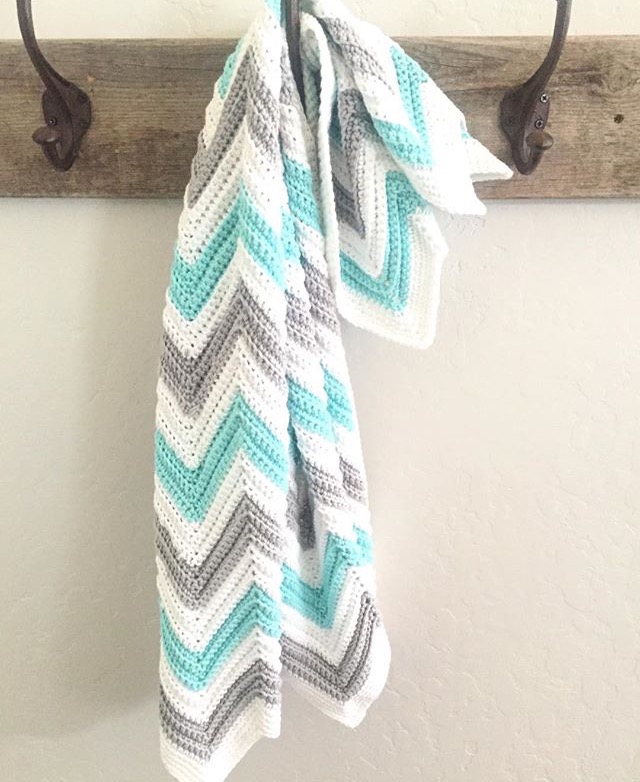
Single Crochet Chevron Blanket
Designer: Daisy Farm Crafts
Yarn weight: (4) Worsted
Suggested yarn: Lion Brand 24/7 Cotton
Chevrons may look intimidating, but this chevron blanket is easy enough even if you are just learning to crochet. Choose your favorite colors to create wonderful patterns with this blanket.
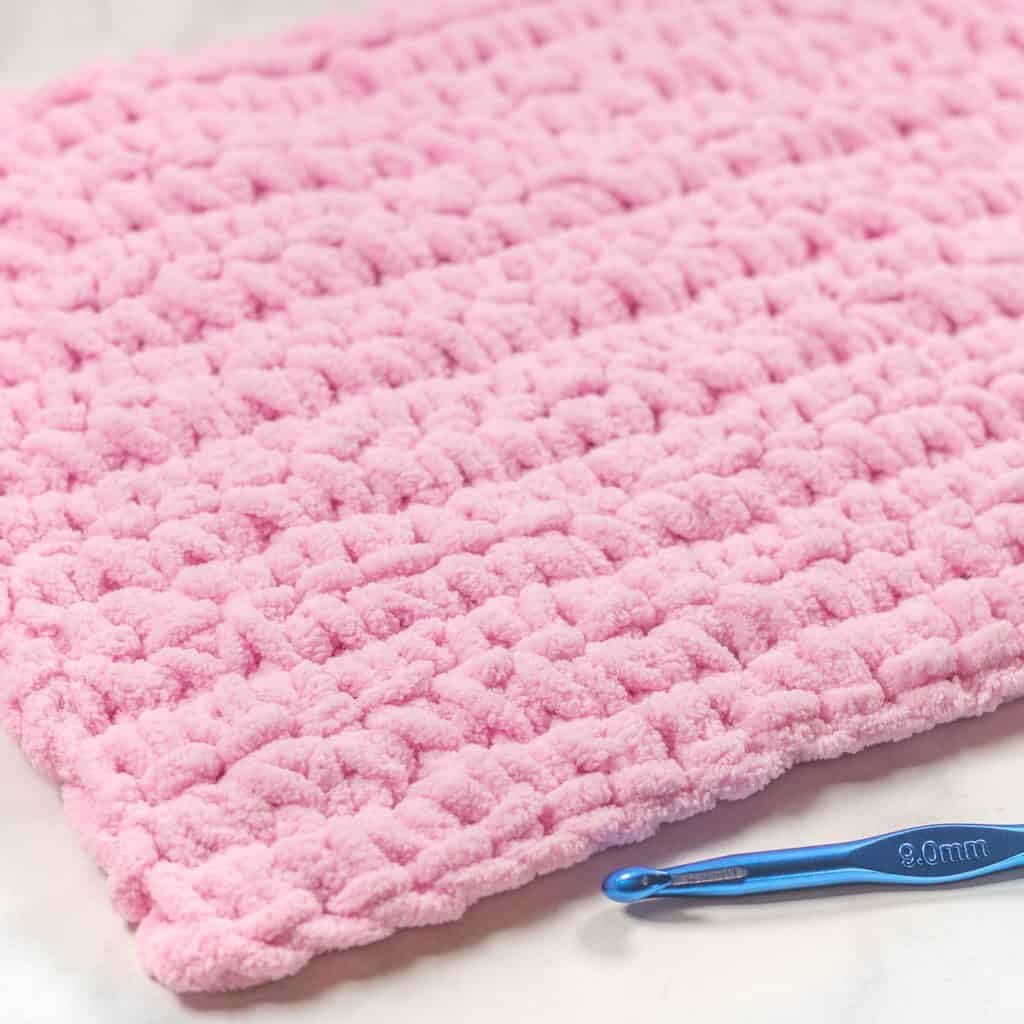
Single Stitch Baby Blanket Crochet Pattern
Designer: Easy Crochet
Yarn weight: (6) Super Bulky
Suggested yarn: Lion Brand Cover Story
This super soft baby blanket works up quickly with chunky blanket yarn. Make a lovey size or stroller-size blanket to keep your little ones warm during the colder months.
Single Crochet Hat Patterns
Beanies and hats are just one of the easiest beginner projects you can make with single crochet.
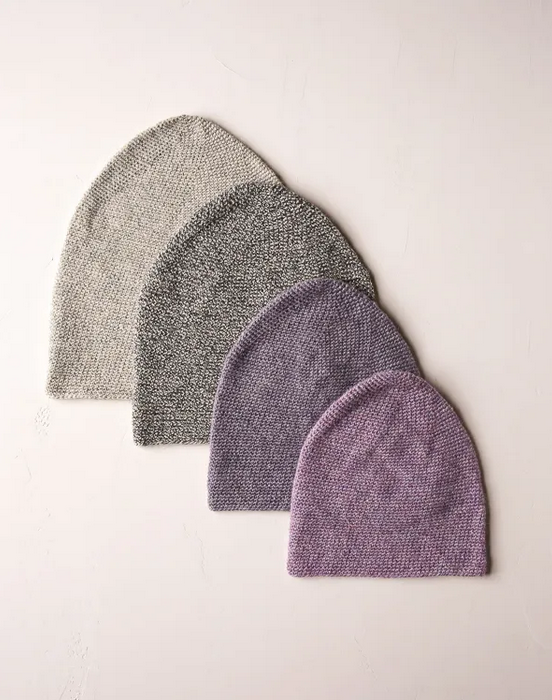
Single Crochet Cap Pattern
Designer: Purl Soho
Yarn weight: (1) Super fine
Suggested yarn: Knit Picks Stroll Hand Painted Yarn
This simple crochet hat is made top-down, and can easily be made in any size for babies and adults. You can even adjust the length to make a snug hat or a slouchy beanie.
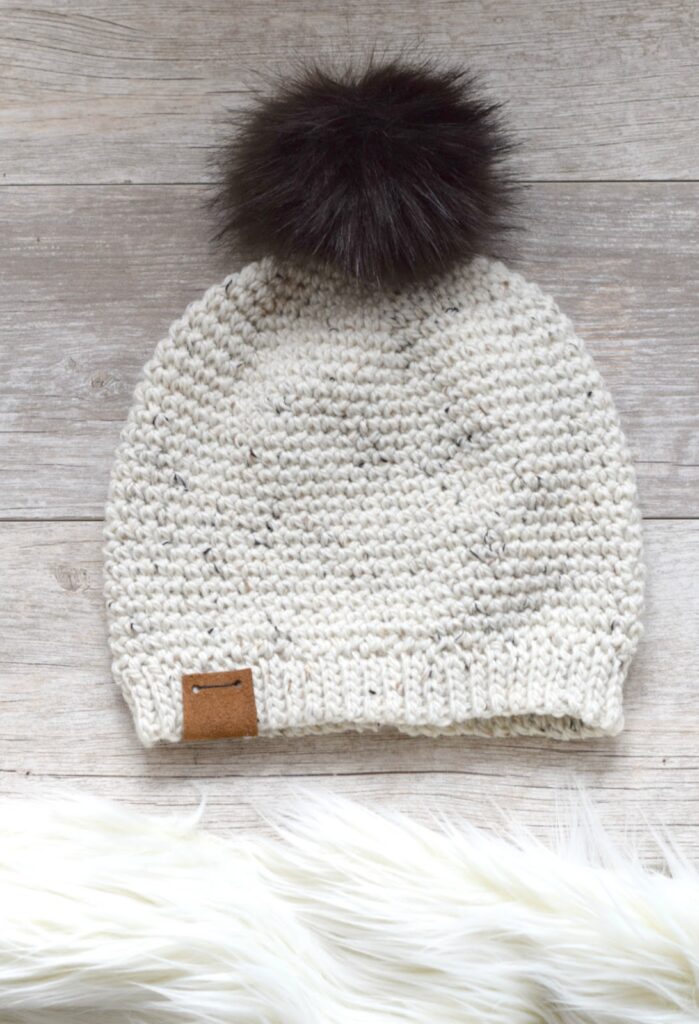
Crochet the Perfect Hat Pattern
Designer: Mama in a Stitch
Yarn weight: (4) Worsted
Suggested yarn: Lion Brand Wool Ease
Hats are one of the easiest beginner projects for anyone learning to crochet in the round. Crocheted from the top down in single crochet with a slip stitch ribbing, it has a knit-like look that is perfect with an adorable pompom on top.
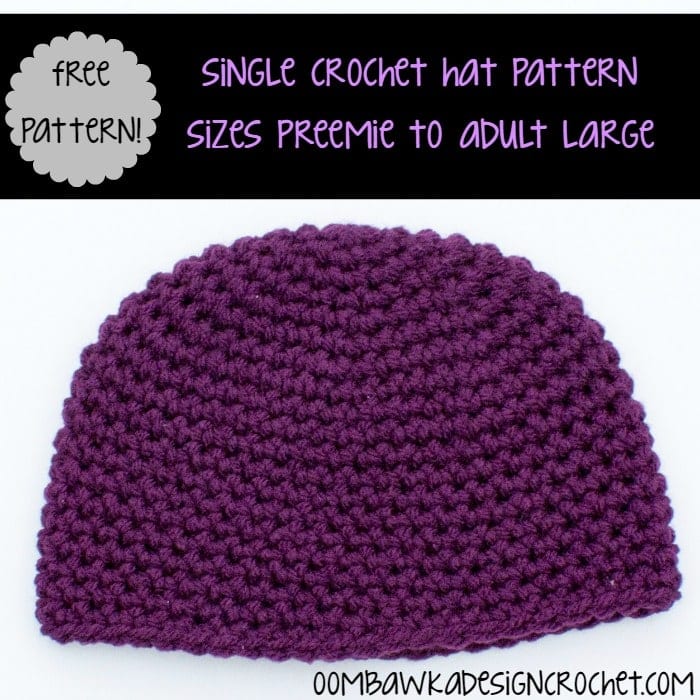
Simple Single Crochet Hat Pattern
Designer: Oombawka Design Crochet
Yarn weight: (4) Worsted/Medium
Suggested yarn: Red Heart with Love
Practice working in continuous rounds while making this super easy single crochet hat. Make it any size – from preemies to adults!
Single Crochet Scarf Patterns
Scarves are a great beginner project for anyone wanting to practice a single crochet stitch and its variations.
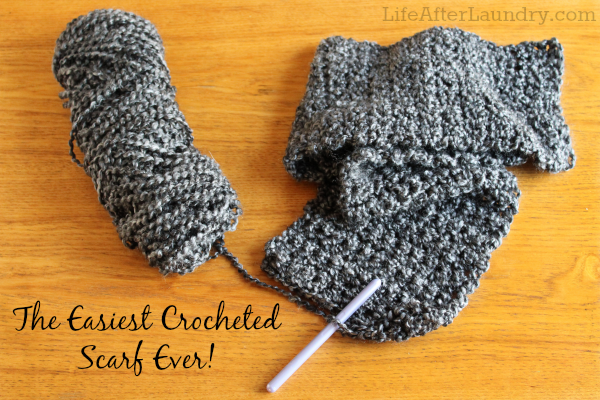
Easy Crochet Scarf for Beginners
Designer: Life after Laundry
Yarn weight: (5) Bulky
Suggested yarn: Lion Brand Homespun
One skein of yarn + single crochet = the easiest scarf project. If you need a quick and easy gift idea, or you want to make it for yourself – this is the perfect scarf pattern for you.
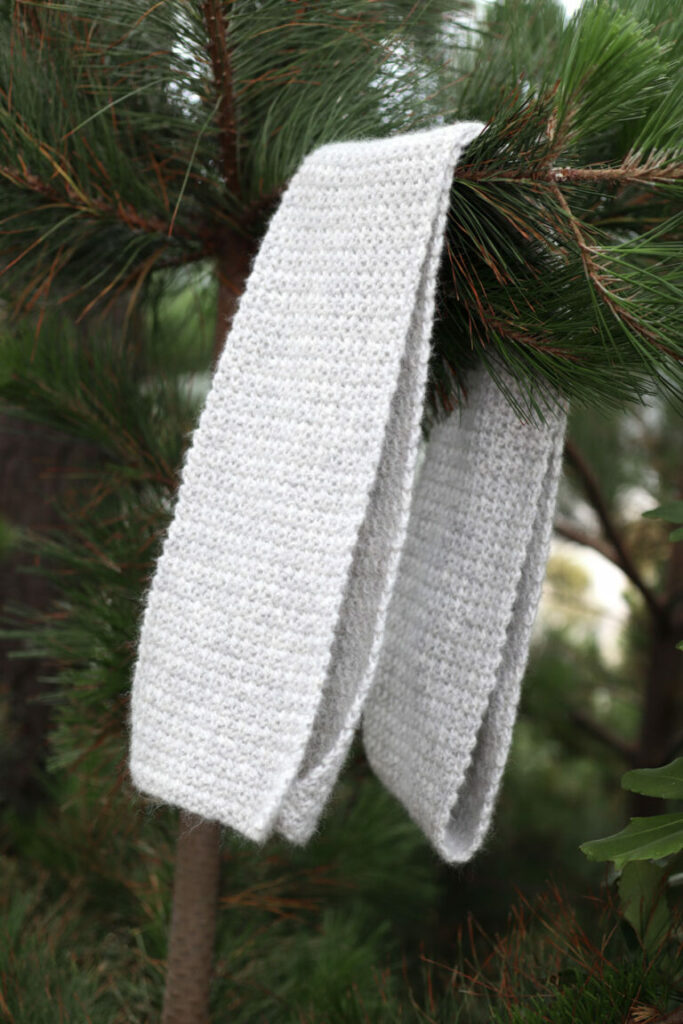
In the Clouds Scarf Pattern
Designer: For the Frills
Yarn weight: (4) Worsted
Suggested yarn: Lion Brand LB Collection Chainette
This light and warm scarf is made up of single crochet and chains. The stitch pattern creates a unique look for this scarf, which you can easily customize depending on how long you want it to be.
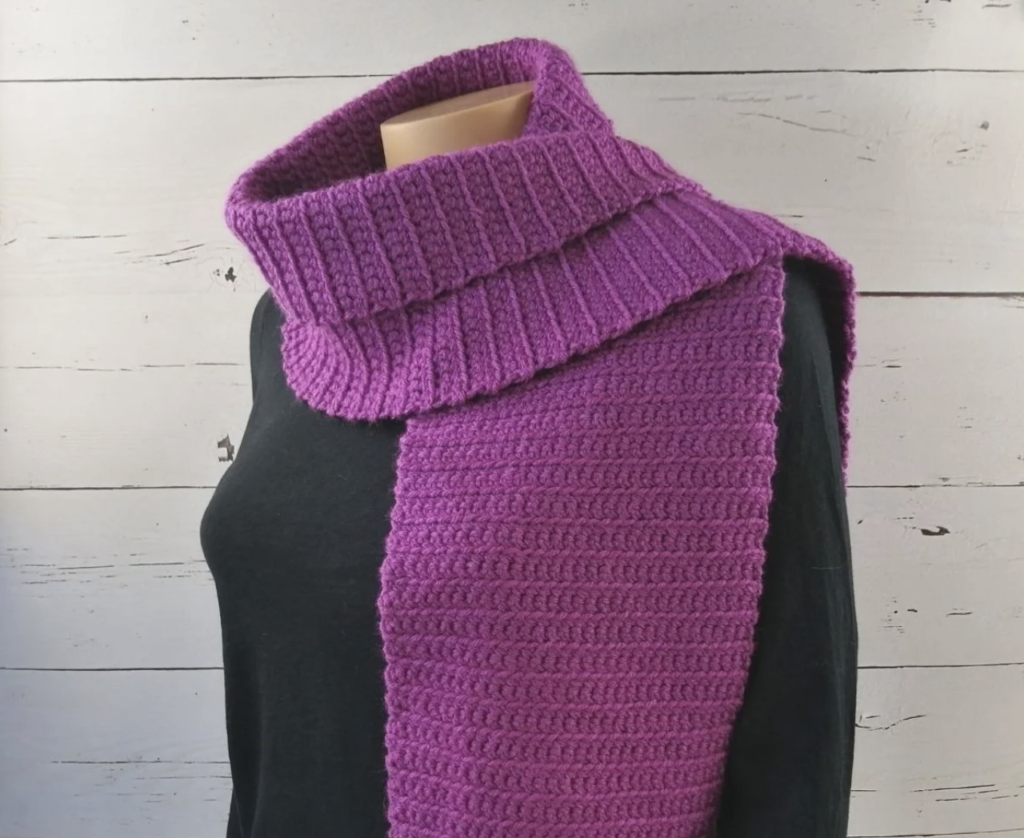
Front Loop Single Crochet Scarf
Designer: Crochet n Crafts
Yarn weight: (4) Worsted
Suggested yarn: Bernat Fabwoolous
Would you believe that this scarf is made with just single crochets? The gorgeous ribbed texture is made with single crochet stitches worked in the front loop, giving it a truly unique look.
Single Crochet Dishcloth Patterns
Dishcloths are one of the quickest, easiest, and most practical projects you can make with just single crochet!
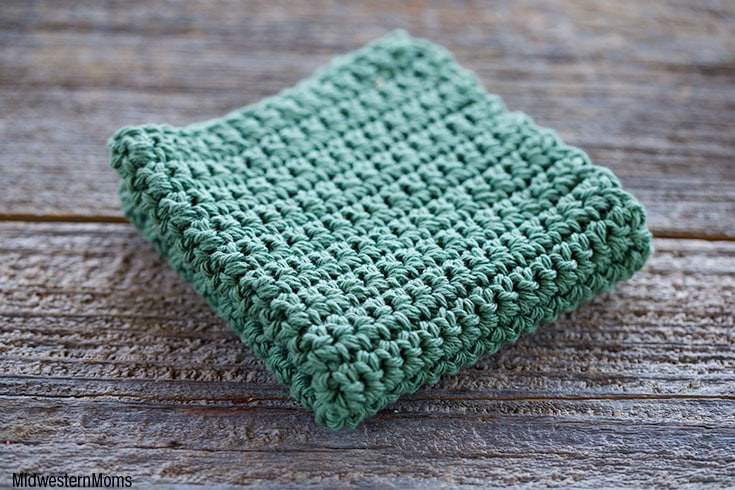
Quick and Easy Crochet Dishcloth Pattern
Designer: Midwestern Moms
Yarn weight: (4) Worsted
Suggested yarn: Lion Brand Pima Cotton
This quick and easy crochet dishcloth pattern works up so fast, you can create a dozen in no time! They make practical gifts and are easily reusable – just wash and dry and you’re ready to use them again.

Beginner Crochet Washcloth Pattern
Designer: Easy Crochet
Yarn weight: (4) Worsted
Suggested yarn: Premier Yarns Home Cotton
A combination of single crochet and half double crochet gives this washcloth its lovely texture. The pattern works up quickly and you can easily make 2-3 washcloths from one skein of yarn.
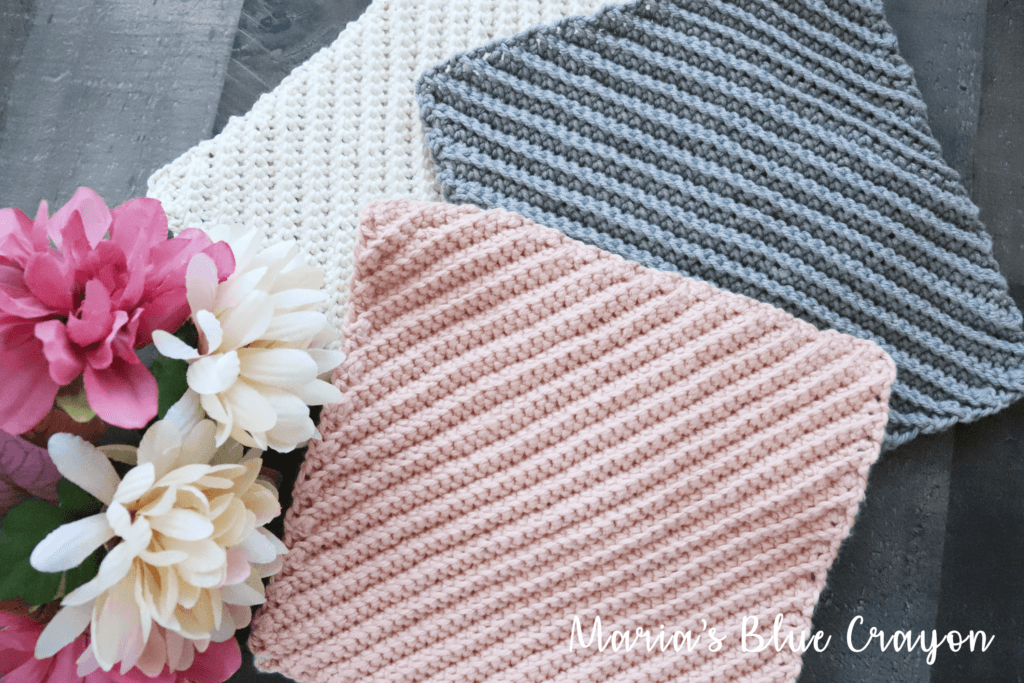
Easy Textured Crochet Dishcloth Pattern
Designer: Maria’s Blue Crayon
Yarn weight: (4) Worsted
Suggested yarn: Knit Picks Dishie
Add dimension to your dishcloth by working in diagonal rows, using only the back loops. You get a gorgeous textured dishcloth – double them up to make kitchen hot pads with an aesthetic look.
Do You Want to Learn to Make More Interesting Crochet Stitches?
If you’re ready to learn more crochet stitches, check out The Ultimate Crochet Stitch Library. Learn 45 unique crochet stitches that you can mix and match to create your own stitch patterns for your projects.
Master these stitches and you will never run out of ideas for your crochet projects.
Foundational Crochet Skills – Learn How to Crochet?
Want to go back to the basics to enjoy crocheting without frustration? Master Crochet Fundamentals with us and you will never feel intimidated by crochet patterns again!
From knowing the right yarn and hooks to reading patterns to taking photos, and even making a business out of crochet – we’ll be with you every step of the way.
Looking for more great crochet blogs: 30 Free Pocket Shawl Crochet Patterns, 30+ Amigurumi Crochet Patterns: Cute and Easy Projects for Beginners, 65+ Crochet Bags and Purses Patterns, 50 Free and Easy Crochet Dishcloth Patterns

Leave a Reply